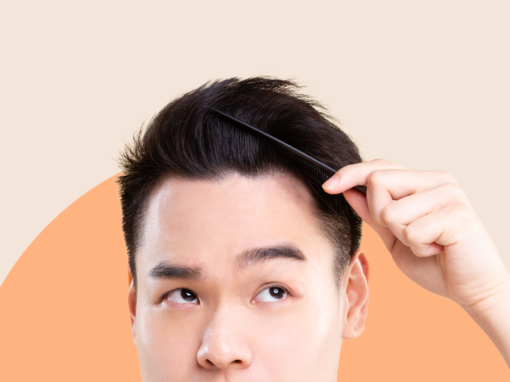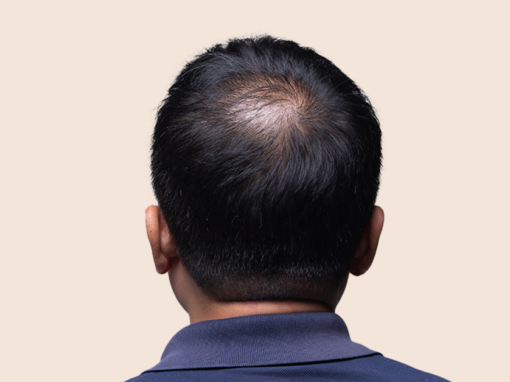Introduction
Embark on a journey to uncover the mysteries of hair loss with this in-depth guide, exploring the various types of alopecia and providing insights into their symptoms and treatments. Unravel the secrets of hair loss and learn how to triumph over it, one strand at a time.
Overview
The enigma of hair loss has puzzled and frustrated countless individuals across the globe as they search for answers to regaining their once-luscious hair. This article ventures into the fascinating alopecia world, shedding light on the diverse types of hair loss that people face, their symptoms, and the treatments medical professionals might recommend.
By understanding these various forms of hair loss, you can be empowered to spot potential issues early on and pursue the right course of action, giving you a fighting chance to preserve and nurture your tresses.
What Are The Different Types Of Alopecia
Androgenetic Alopecia
Androgenetic alopecia, also known as male-pattern or female-pattern hair loss, is the most prevalent type. It occurs when hair follicles become sensitive to dihydrotestosterone (DHT), a hormone derivative of testosterone. This sensitivity causes the follicles to shrink, leading to thinner, weaker hair.
Alopecia Areata
Alopecia Areata is an autoimmune condition where the body’s immune system mistakenly targets hair follicles, leading to sudden and uneven hair loss. This type of hair loss can affect any area with hair, such as the scalp, eyebrows, or facial hair. Various forms of Alopecia Areata exist, including diffuse Alopecia Areata, alopecia totalis (complete scalp hair loss), and alopecia universalis (total body hair loss).
Scarring Alopecia (Cicatricial Alopecia)
Cicatricial alopecia, or scarring alopecia, is a group of hair loss conditions resulting in permanent hair loss due to hair follicle scarring. This group of disorders includes lichen planopilaris, frontal fibrosing alopecia, and central centrifugal cicatricial alopecia. The damage to hair follicles in these conditions causes inflammation and permanent hair loss.
Telogen Effluvium
Telogen effluvium is a temporary hair loss caused by a disruption in the hair growth cycle. It occurs when many hair follicles enter the resting phase (telogen) simultaneously, leading to excessive shedding. This hair loss often happens after a stressful event, such as childbirth or illness.
Anagen Effluvium
Anagen effluvium is characterised by sudden hair loss during the active growth phase (anagen). It commonly occurs as a side effect of chemotherapy or radiation therapy, which damages hair follicles and interrupts the hair growth cycle.
Traction Alopecia
Traction alopecia results from excessive strain on hair follicles due to hairstyles that exert strong tension, like tight braids or ponytails. This form of hair loss occurs when constant pulling damages the follicles. Failing to address traction alopecia may ultimately result in irreversible hair loss.
Alopecia Treatment Options
Alopecia treatment depends on the specific type of hair loss and its underlying cause. For androgenetic alopecia, medical professionals may recommend topical treatments like minoxidil or oral medications like finasteride. In cases of Alopecia Areata, corticosteroids or other immunosuppressive medications might be used to treat the condition.
For scarring alopecia, early intervention is crucial to prevent permanent hair loss. Medical professionals may recommend anti-inflammatory medications, antibiotics, or even hair transplantation. Telogen effluvium and anagen effluvium often resolve once the underlying cause is addressed. Lastly, traction alopecia can be treated by adopting gentler hair care practices and avoiding tight hairstyles.
Conclusion
Understanding different alopecia types and their causes is essential for effectively addressing hair loss. Early detection and intervention can help minimise the impact of hair loss and improve the chances of successful treatment. By familiarising yourself with these different types of hair loss, you can identify potential problems and take action to maintain a healthy scalp and hair.
FAQs Related To Alopecia Types
What are the patterns of hair loss in alopecia?
Androgenetic alopecia typically follows a distinct pattern, with hair thinning at the temples and crowns in men and diffuse thinning in women. Alopecia Areata presents as round, smooth patches of hair loss, while scarring alopecias often cause irregular areas of hair loss accompanied by inflammation and scarring. Telogen effluvium leads to diffuse shedding, while anagen effluvium causes widespread hair loss during growth.
What type of alopecia is most common?
Androgenetic alopecia is a widespread hair loss condition affecting millions of male and female individuals worldwide. Studies suggest that around 50% of men encounter varying levels of hair loss by the time they turn 50, while nearly 40% of women undergo hair thinning as they approach menopause.
What vitamins help Alopecia Areata?
While there is no definitive cure for Alopecia Areata, certain vitamins and nutrients may help support hair health and potentially reduce hair loss. These include biotin, zinc, vitamin D, and antioxidants like vitamins C and E. However, consulting a medical professional before starting any supplement regimen is essential, as individual needs may vary.
What is alopecia barbae, and how is it different from other alopecia?
Alopecia barbae is a specific form of Alopecia Areata that affects the beard area in men. It presents as small, round patches of hair loss in the beard and can sometimes extend to the eyebrows or scalp. The primary difference between alopecia barbae and other types of alopecia is the location of hair loss. While Alopecia Areata can affect any hair-bearing area, alopecia barbae specifically targets facial hair.
This article is for informational purposes only and does not constitute medical advice. The information contained herein is not a substitute for and should never be relied upon for professional medical advice. Book a consultation with andSons medical team to learn more about healthcare treatments here.


